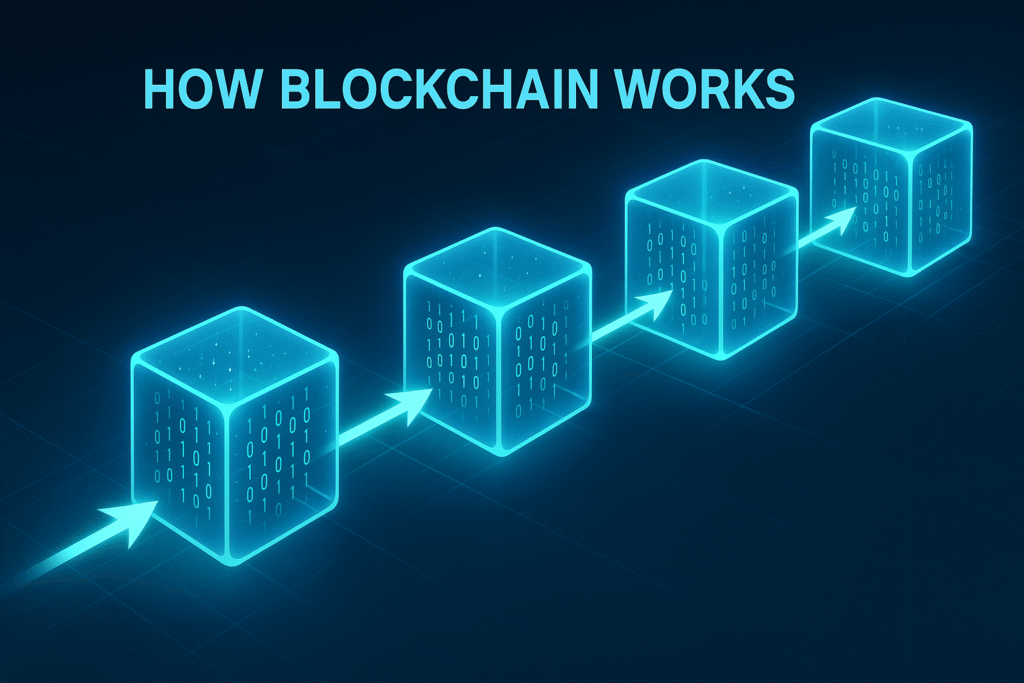“Blockchain” is a word you’ve probably seen in news headlines, especially when people talk about Bitcoin or other cryptocurrencies. But if you ask the average person: What Is Blockchain, chances are they’ll struggle to explain it clearly. Let’s break it down in simple terms.
Picture Blockchain as a Chain of Stories
Imagine you keep a diary where you write down every important thing that happens. But here’s the twist: once a page is full, you glue it to the previous one, creating a long, unbreakable chain of pages. Now picture that hundreds of people have a copy of your diary, and all of them are watching closely to make sure no one cheats by ripping out or changing a page.
That’s pretty much how blockchain works—only it’s digital and worldwide.

Why Was Blockchain Created?
In the past, whenever you wanted to send money or make a deal, you had to rely on banks or other institutions to keep records and ensure everything was fair. But what if you didn’t want to trust just one organization?
Blockchain was invented to let people exchange value directly, without middlemen, while keeping everything transparent and secure.
How Does It Stay Secure?
When someone makes a new transaction, computers all over the world check it to confirm it’s real. Once it’s approved, the info gets added to a new “block.” This block is then connected to the chain of earlier blocks, and here’s the key: once a block is part of the chain, it’s locked in. Changing anything would break the whole chain, and the system would catch it immediately.
That’s why blockchain is considered so secure.
Is Blockchain Only About Cryptocurrency?
Not at all! While people often ask what is blockchain in the context of Bitcoin, this technology is useful in many other areas:
- Tracking Products: Making sure goods are authentic and safe
- Healthcare: Protecting patient records
- Elections: Making voting more secure
- Digital Ownership: Proving you own digital art or assets
Pros and Cons
The upsides:
- Transparency: Records are open for everyone to see
- Security: Very hard to hack or change
- No middlemen: No need to trust a single company
- Flexibility: Useful across many industries
The downsides:
- Energy use: Some blockchains (like Bitcoin’s) require a lot of electricity
- Speed: Transactions can be slow at times
- Complexity: It’s not always easy for beginners
- Legal gray zones: Laws are still being developed
Why It Matters in the U.S.
In the United States, blockchain is being tested and adopted in more areas. Banks are exploring faster payment systems, tech companies are using it to secure data, and the shipping industry relies on blockchain to track goods. Even if you don’t use it directly yet, blockchain is likely to play a part in your daily life soon.
Final Thoughts
So, what is blockchain? In simple words, it’s a secure, digital way of keeping records that everyone can view but no one can secretly change. Whether you’re curious about crypto, digital art, or the next big thing in tech, understanding the basics of blockchain is a smart move—it’s a technology that’s already shaping the future.
